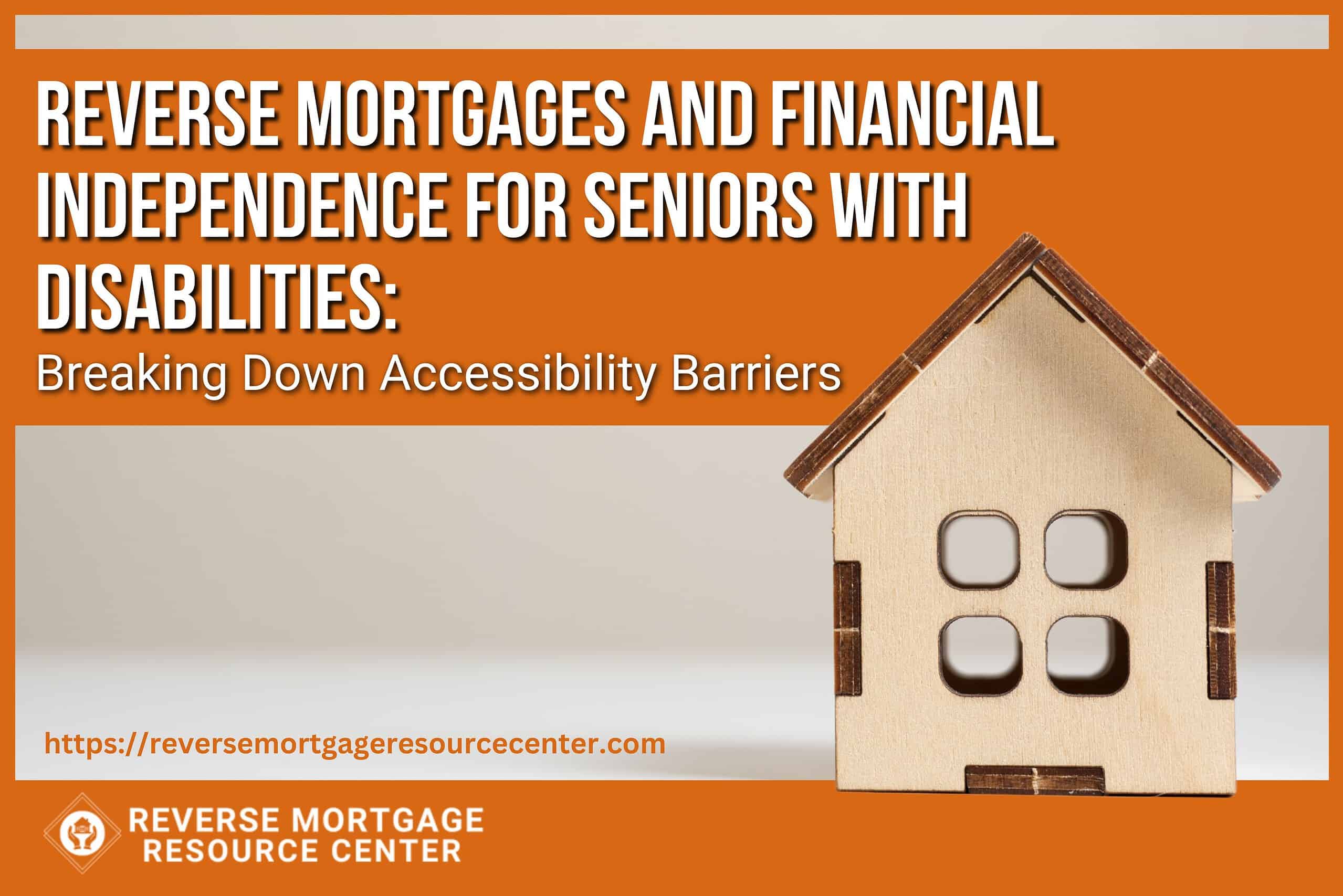Reverse Mortgages and Financial Independence for Seniors with Disabilities: Breaking Down Accessibility Barriers
As individuals approach retirement age, the pursuit of financial independence becomes paramount. This pursuit is further complicated for seniors with disabilities, who often face unique challenges in maintaining their financial well-being while ensuring accessibility and comfort in their living arrangements. In recent years, reverse mortgages have emerged as a valuable financial tool that can address these concerns, offering seniors with disabilities a pathway to greater independence and stability in their retirement years. In this article, we will delve into the intricacies of reverse mortgages and explore how they can serve as a solution for seniors with disabilities, breaking down accessibility barriers and empowering them to live comfortably in their own homes.
Understanding Reverse Mortgages: A Primer
Before delving into the specifics of how reverse mortgages can benefit seniors with disabilities, it’s essential to have a clear understanding of what they entail. A reverse mortgage is a financial product specifically designed for homeowners aged 62 and older. Unlike traditional mortgages, where borrowers make monthly payments to a lender, reverse mortgages allow homeowners to convert a portion of their home equity into accessible funds without the need to sell their home or incur monthly mortgage payments.
The key feature of a reverse mortgage is that it provides homeowners with a readily accessible source of funds, either in the form of a lump sum, monthly payments, or a line of credit, while allowing them to retain ownership of their home. The loan is repaid when the homeowner sells the home, moves out permanently, or passes away, at which point the lender needs to be paid the borrowed amount plus accrued interest. Any remaining equity belongs to the homeowner or their heirs.
Accessibility Solutions for Seniors with Disabilities
For seniors with disabilities, maintaining accessibility and comfort in their living environment is of paramount importance. However, retrofitting homes with necessary accommodations can be costly, and traditional financing options may not always be feasible. Reverse mortgages offer a viable alternative, enabling seniors with disabilities to access the funds needed to make necessary modifications to their homes, thus enhancing accessibility and improving their quality of life.
Home Modifications and Accessibility Upgrades
One of the most significant advantages of reverse mortgages is their flexibility in how funds can be used. Seniors with disabilities can utilize the proceeds from a reverse mortgage to make a variety of home modifications and accessibility upgrades, including:
- Installing wheelchair ramps or stairlifts
- Widening doorways and hallways to accommodate mobility aids
- Retrofitting bathrooms with grab bars and roll-in showers
- Lowering countertops and cabinets for wheelchair accessibility
- Installing non-slip flooring and ramps for easier navigation
By investing in these modifications, seniors with disabilities can create a safer and more accessible living environment, allowing them to age in place with greater independence and dignity.
In-Home Care and Support Services
In addition to physical modifications, seniors with disabilities may also require assistance with daily activities and personal care. Reverse mortgages can provide the financial means to afford in-home care and support services, allowing seniors to receive the assistance they need while remaining in the comfort of their own homes. Whether it’s hiring a caregiver, purchasing medical equipment, or accessing specialized therapies, the funds from a reverse mortgage can help cover the costs associated with maintaining independence and quality of life.
Enhancing Financial Independence
Beyond addressing accessibility concerns, reverse mortgages can also contribute to seniors’ financial independence and security in retirement. For many seniors with disabilities, limited income and rising healthcare expenses can strain their financial resources, making it challenging to maintain a comfortable standard of living. Reverse mortgages offer a solution by providing a reliable source of funds that is not contingent on employment or investment returns.
Supplementing Retirement Income
One of the primary benefits of a reverse mortgage is its ability to supplement retirement income without requiring seniors to sell their homes or deplete their savings. By tapping into their home equity, seniors with disabilities can receive regular disbursements or a lump sum to supplement their Social Security benefits, pension income, or other sources of retirement income. These additional funds can help cover essential expenses, such as medical bills, home maintenance, and everyday living costs, thereby reducing financial stress and enhancing overall well-being.
Mitigating Long-Term Care Costs
Long-term care expenses can quickly deplete retirement savings, especially for seniors with disabilities who may require specialized care and support. Reverse mortgages offer a strategic planning tool for mitigating these costs by providing access to funds that can be used to finance long-term care insurance premiums or cover the expenses of assisted living facilities or nursing homes if necessary. By proactively addressing potential healthcare needs, seniors can protect their assets and preserve their independence in the face of future uncertainties.
REVERSE MORTGAGE RESOURCE CENTER ~lIVE lIFE ON yOUR tERMS~
Our Lending Team has been serving our clients since 2004. We are passionate about serving our clients with integrity to help them achieve their financial goals.







